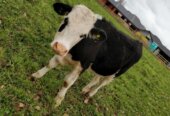Attendance of Te Awamutu’s Museum is starting to increase, as they go through the process of finding their post-covid normal.
Following a stagnant start to the year, the museum saw a boost in general visitor numbers last month. It counted 428 general visitors in April, which was higher than its previous two months combined at 335.
However, this is still much lower than pre-covid levels, as in April 2019, the museum counted 764 general visitors.
“Museums nationally, along with other providers in the tourism, events and hospitality industries are still in the process of understanding what a new normal might look like, this makes it an interesting time to see how and when visitation might return to pre-covid levels for these types of facilities,” said Museums and Heritage director, Anne Blyth.

Museum director Anne Blyth.
Despite the uncertainty, Blyth is positive about the slow return of domestic tourism.
“Over the past couple of months, we have started to see a return of our domestic tourist visitors, it has been lovely to welcome them back into the museum.”
She said their April school holiday Easter and Anzac activities were very popular, and led to an increase in families coming through the museum.
“Term 2 has also seen the return of a steady stream of school bookings for our museum education programmes, we have enjoyed welcoming the students back into the museum.”
She said they hope to attract visitors through organic means, as they are still mindful of keeping the community and visitors safe.
“We will be encouraging people back in through new exhibits and the Tui and Tama programmes, we expect this to be an organic draw for people, as people become comfortable with visiting public facilities again following Covid-19 limitations.”
The museum is hosting Raukawa, an exhibition that portrays the history and journey of Ngāti Raukawa. Blyth says the team is also looking forward to their Mātakitaki exhibition.
“(It is) a collaborative Iwi exhibition providing an immersive display of korero tuku iho sharing the lives of Māori living within and around the three Pa – Mātakitaki, Tauranga Kohia and Puketutu,” she said.









